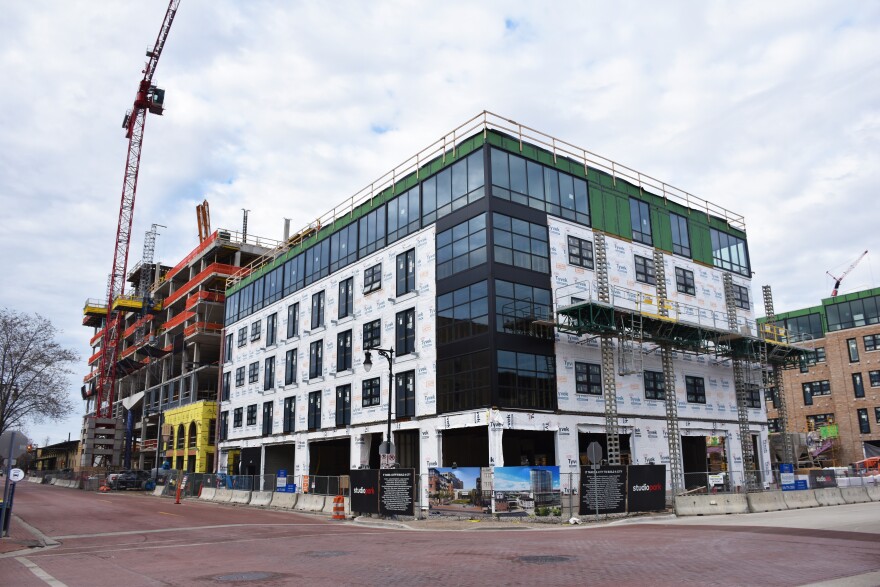A new type of apartment has been dominating American city landscapes over the past decade. People call these apartments a lot of things: “ticky-tacky,” “stumpies,” “five-over-ones,” and “dingbats.”
What ties them together is that they’re colorful, cheap, and nearly identical.
Kit McCullough is a lecturer at the Taubman College of Architecture and Urban Planning at the University of Michigan, where she teaches a class about these cookie-cutter apartments.
“These buildings are formulas, and like most formulas, they’re the most efficient response to a set of constraints,” McCullough said.
Those constraints include building codes and, of course, cost. So, architects use the designs that they know will meet safety codes and come in on budget.
Justin Fox, a writer for Bloomberg Businessweek, has written about the history of what are sometimes known as “five-over-one” apartments.
Wood is the primary material for these “ticky-tacky” apartments. Large wood construction buildings fell out of favor in the 1800s because of wood's flammability. The widespread damage during the Great Chicago Fire of 1871 was due, in part, to the fact that the city's buildings were mostly wood construction. But with the incorporation of automatic sprinklers and treated wood, Fox says the material has come back into favor.
And there are good reasons for that. First, it's a lot cheaper to build with wood than with brick or concrete. There’s an environmental advantage too. When forests are properly managed and replanted, Fox says, wood “can be much closer to carbon neutral or even carbon positive than other building materials.”
But between material constraints, building codes, and a desire to make construction as cheap as possible, these apartments often end up nearly identical. McCullough calls the basic design “uninspired.” She says the real challenge is turning a cheap-looking pattern into something unique and aesthetically pleasing. That's what leads some developers to slap on bright and colorful panels or unexpected window placements.
While she's not thrilled with the appearance or prevalence of “ticky-tacky” apartments, McCullough thinks they can have a positive impact on residents.
“We have more people who are living close to our major job centers so they can walk to work. We have more people supporting retail downtown,” McCullough explained.
The ground floors of these buildings are often taken up by restaurants and retail. But McCullough says developers can encourage community by making sure there are lots of gathering places like "stoops and porches and shopfronts.”
This post was written by Stateside production assistant Anna Schlutt.





